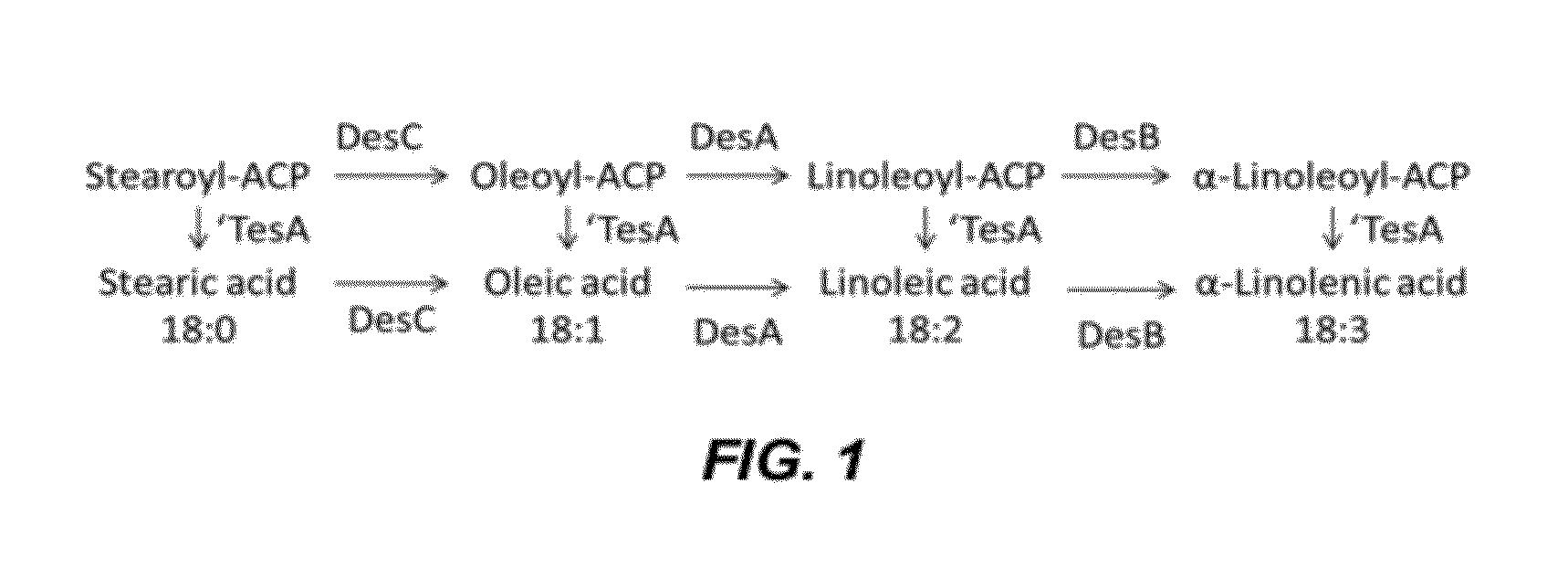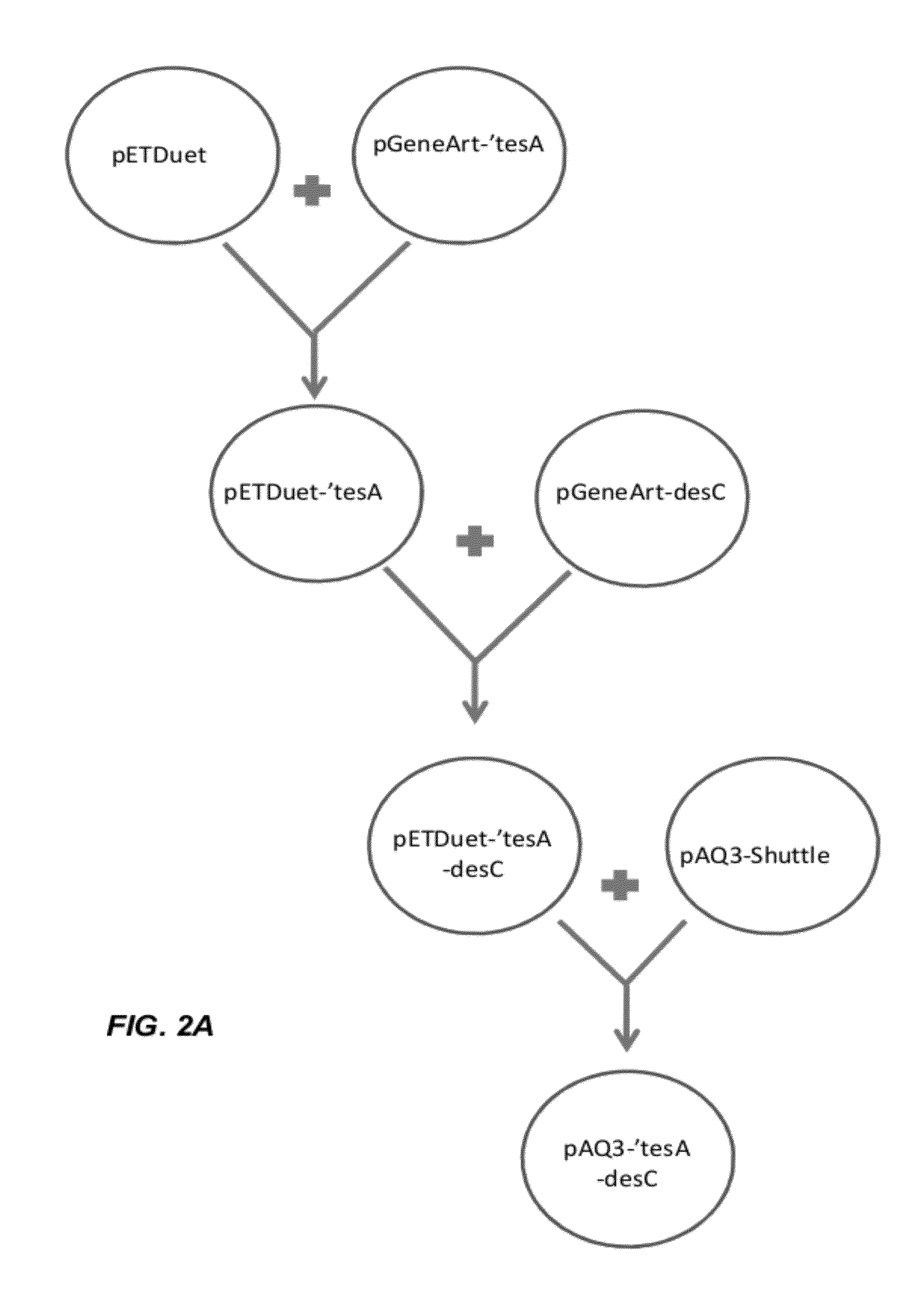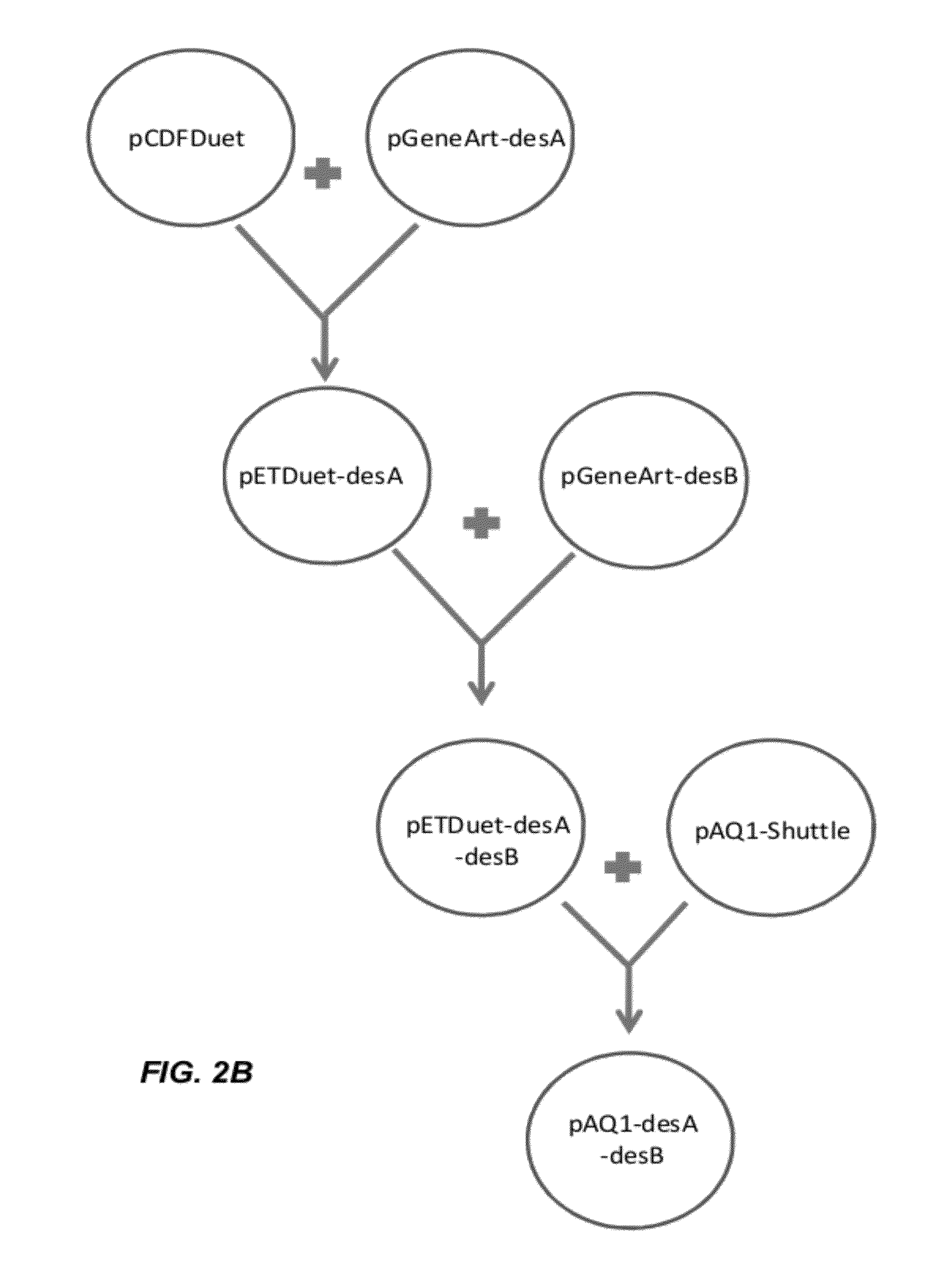Microorganisms and methods for producing unsaturated fatty acids
a technology of unsaturated fatty acids and microorganisms, which is applied in the field of microorganisms and methods for producing unsaturated fatty acids, can solve the problems of high price, environmental concerns, and questionable land-use practices
- Summary
- Abstract
- Description
- Claims
- Application Information
AI Technical Summary
Benefits of technology
Problems solved by technology
Method used
Image
Examples
example 1
Construction of Plasmids for Expression of Unsaturated Fatty Acids
[0160]The desA gene (acyl-lipid desaturase Δ12; slr1350; Genbank Accession No. NC—000911.1) from Synechocystis sp. PCC 6803 was codon optimized for expression in Escherichia coli and synthesized (DNA 2.0). The codon optimized desA open reading frame is SEQ ID NO: 1. The desB gene (acyl-lipid desaturase Δ15; sll1441; Genbank Accession No. NC—000911.1) from Synechocystis sp. PCC 6803 was codon optimized for expression in Escherichia coli and synthesized (DNA 2.0). The codon optimized desB open reading frame is SEQ ID NO: 2. The desC gene (acyl-lipid desaturase 49; sll0541; Genbank Accession No. NC—000911.1) from Synechocystis sp. PCC 6803 was codon optimized for expression in Escherichia coli and synthesized (DNA 2.0). The codon optimized desC open reading frame is SEQ ID NO: 3.
[0161]A truncated version of the E. coli tesA (acyl-CoA thioesterase I; b0494) was PCR amplified from the E. coli BL21(DE3) (Novagen) chromosome...
example 2
Production of Unsaturated Fatty Acids in E. coli
[0167]Plasmids were transformed into E. coli BL21(DE3) and selected on 50 mg / l spectinomycin (for the pCDFDuet-1 derivatives) and 100 mg / l carbenicillin (for the pETDuet-1 derivatives). A single colony was picked and stored as a glycerol stock at −80° C., to serve as a master cell stock. A working cell bank was created from this master cell stock in EZ-Rich medium (Teknova) supplemented with 10% glycerol (v / v).
[0168]10 ml EZ-Rich production cultures (in a 125 ml baffled flask) were inoculated to OD600nm=0.05 with a working cell stock and grown at 22-37° C. and 250 rpm. Cultures were grown to OD600nm≈0.6-0.8 and heterologous gene-expression was initiated with 1 mM isopropyl β-D-1-thiogalactopyranoside (IPTG) and grown for another 2-16 hr until harvest. Upon harvesting, a 1 ml aliquot was centrifuged; the supernatant was decanted, and stored at −20° C. until fatty acid and gene-expression analyses.
example 3
Extraction of Fatty Acids Produced in E. coli and Quantification Using HPLC
[0169]The pellet was then resuspended in 100 ul of chloroform:methanol (2:1 vol / vol) and incubated at 55° C. for 10 minutes. The resuspended lysed cells were centrifuged at 8000 rpm for 5 minutes and the supernatant was extracted and dried in room temperature. It was then resuspended in 100 ul of methanol followed by 100 ul of 1 mg / ml PDAM (1-Pyrenyldiazomethane suspended in ethyl acetate). The derivatization reaction was allowed to proceed for at least 90 minutes at room temperature in an amber walled HPLC vial. The fatty acid standards were diluted in methanol at different concentrations and derivatized using PDAM in similar conditions.
[0170]After derivatization, 10 ul of derivatized fatty acid samples were injected onto a Zorbax Eclipse XDB-C18 reverse phase column (4.6×150 mm, 5 μm) maintained at 30° C. Samples were eluted with an Agilent 1100 series HPLC system at 1 ml / min with Buffer A: H2O and Buffer B...
PUM
| Property | Measurement | Unit |
|---|---|---|
| Tm | aaaaa | aaaaa |
| temperatures | aaaaa | aaaaa |
| pressure | aaaaa | aaaaa |
Abstract
Description
Claims
Application Information
 Login to View More
Login to View More - R&D
- Intellectual Property
- Life Sciences
- Materials
- Tech Scout
- Unparalleled Data Quality
- Higher Quality Content
- 60% Fewer Hallucinations
Browse by: Latest US Patents, China's latest patents, Technical Efficacy Thesaurus, Application Domain, Technology Topic, Popular Technical Reports.
© 2025 PatSnap. All rights reserved.Legal|Privacy policy|Modern Slavery Act Transparency Statement|Sitemap|About US| Contact US: help@patsnap.com



